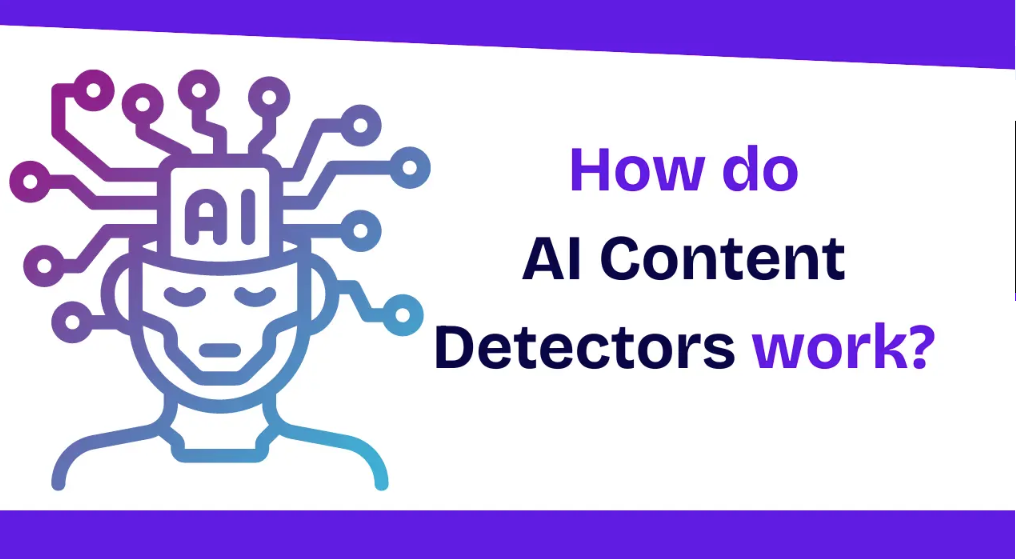Introduction
With the rapid rise of AI tools like ChatGPT, more students, professionals, and content creators are leveraging its capabilities to write faster and smarter. However, this surge has sparked concern about the originality of AI-generated content—leading to the widespread use of AI detectors such as Turnitin, GPTZero, and Originality.ai. These tools aim to distinguish between human and machine-written text, prompting a key question: How can you use ChatGPT without getting flagged by AI detectors?
As search volume increases for phrases like “how to bypass AI content detectors”, “is ChatGPT detectable?”, and “AI plagiarism checkers,” it’s clear that people are seeking safe, ethical ways to use ChatGPT effectively. This article explores how AI detection works, why content gets flagged, and most importantly, how to humanize, refine, and responsibly use ChatGPT to create content that stands up to scrutiny without sacrificing quality or authenticity.
Understanding How AI Detectors Work
As AI-generated content becomes more prevalent, so too does the need to detect it. Tools like Turnitin AI Detection, GPTZero, Originality.ai, and Writer.com’s AI detector are now widely used by educators, editors, and employers to flag text written by language models like ChatGPT. To avoid false positives or ethical issues, it’s crucial to understand how AI detectors work and what triggers them.
At their core, most AI detectors analyze linguistic patterns, not plagiarism databases. They don’t check whether the content exists elsewhere on the web; instead, they examine how the text is written. The key indicators are:
- Perplexity: A measure of how unpredictable a piece of text is. Human writing typically includes irregularities, while AI-generated text often flows too smoothly and predictably.
- Burstiness: This refers to variation in sentence length and structure. Human writing tends to have bursts—some short sentences, some long—whereas AI models often produce uniform sentence patterns.
- Repetition and predictability: AI detectors look for repeated words, overuse of transitions, and structurally similar paragraphs that signal machine generation.
- Semantic depth: Human writing often contains layered ideas, subtle opinions, or experiential cues that AI-generated content lacks unless specifically prompted.

Keywords like “how do AI detectors work”, “can ChatGPT be detected by Turnitin”, and “AI content detector online” indicate growing interest in these tools, especially in academic and publishing sectors.
Understanding these mechanics helps users write, revise, and prompt more effectively. It’s not just about tricking the detector—it’s about enhancing content to be more authentic, nuanced, and human in tone and structure.
Why ChatGPT Content Gets Flagged
Despite ChatGPT’s advanced natural language capabilities, content generated by the model can often be flagged by AI detectors due to predictable stylistic patterns and machine-learned structures. Understanding why this happens can help users refine the output to avoid false flags—especially when writing for academic, professional, or publishing platforms.
1. Overly Uniform Sentence Structure
AI-generated text tends to follow a consistent rhythm—sentences are often the same length and syntactically similar. Detectors look for this uniformity, which is uncommon in natural human writing that typically mixes short, long, and complex sentence forms.
2. Predictability and Low Perplexity
ChatGPT is trained to choose the most statistically likely next word, which often results in content that reads smoothly but lacks variation or surprise. This predictability makes the text easier to detect using perplexity-based algorithms.
3. Lack of Personalization or Experience
ChatGPT can simulate tone but struggles to replicate personal experiences, anecdotes, and specific domain knowledge unless explicitly prompted. This absence of human context often makes the text feel generic or artificially neutral.
4. Repetitive Phrasing and Transitional Overuse
Phrases like “In conclusion,” “Moreover,” and “On the other hand” are frequently overused in AI content. Detectors pick up on this pattern, especially when transitions are mechanically inserted at the start of every paragraph.
Searches like “why does Turnitin flag ChatGPT”, “ChatGPT plagiarism risk”, and “AI content red flags” are increasingly common, reflecting real concerns among students, writers, and professionals. Being aware of these red flags allows users to adapt their writing and prompts to create more human-like, detector-safe content.
Ethical and Legal Considerations
As AI tools like ChatGPT become increasingly integrated into writing, marketing, and education, users must carefully consider the ethical and legal implications of AI-generated content. While ChatGPT offers incredible convenience, its misuse—whether intentional or not—can result in serious consequences such as academic penalties, reputational damage, or even legal disputes.
1. Academic Integrity and Plagiarism
In academic settings, using ChatGPT to write essays, assignments, or exams without disclosure can violate institutional policies. Searches for “is using ChatGPT plagiarism?” and “can ChatGPT get you expelled?” highlight concerns among students and educators alike. While ChatGPT generates original text, submitting it as your own work—especially in academia—can still be considered academic dishonesty.
2. Copyright and Content Ownership
Legally, AI-generated content often exists in a gray area. According to most jurisdictions, content created by AI without human authorship may not qualify for copyright protection. This raises questions around ownership, especially if the material is used commercially or published. Businesses using ChatGPT-generated content should always review and revise outputs to ensure originality and legal defensibility.
3. Transparency and Disclosure
In marketing, journalism, or freelance work, failing to disclose that AI was used to produce content can erode trust. Ethical best practices suggest being transparent with clients, readers, or employers when AI has been involved—especially in industries that value authentic voice and expertise.
Ethical use of ChatGPT means treating it as a collaborative tool, not a shortcut. Combining AI efficiency with human insight ensures not only compliance with institutional and legal standards but also maintains the integrity and credibility of your work.
How to Humanize ChatGPT Output
One of the most effective ways to avoid getting flagged by AI detectors is to make your ChatGPT-generated content sound more like it was written by a human. AI detection tools rely on identifying overly predictable patterns, uniform tone, and lack of nuanced expression—traits commonly found in unedited AI outputs. To reduce detection risk and increase authenticity, it’s important to humanize your content before publishing or submitting it.
1. Add Personal Voice and Experience
Incorporate personal insights, opinions, or anecdotes. Even simple phrases like “From my experience…” or “I’ve found that…” introduce a level of personalization that ChatGPT doesn’t naturally provide unless explicitly prompted.
2. Vary Sentence Structure and Rhythm
Humans naturally write with inconsistency—mixing short, medium, and long sentences. Edit ChatGPT’s output by breaking up long paragraphs, using fragments for emphasis, or inserting rhetorical questions for a conversational tone.
3. Use Unique Phrasing and Colloquialisms
AI tends to use safe, formal language. Replace overused phrases like “In conclusion” or “Moreover” with more casual alternatives such as “To wrap things up” or “Here’s the thing.” This small tweak can significantly alter the text’s detectability.

4. Reword and Edit Key Sections
Don’t rely on the AI’s draft as your final version. Rewrite introductions, conclusions, and key points using your own style. This not only helps evade AI detectors but also enhances clarity and originality.
By intentionally humanizing your content, you increase its natural feel and reduce the likelihood of detection—while delivering writing that better resonates with your audience.
Tools and Techniques to Test Your Content
Before publishing or submitting any ChatGPT-generated content, it’s crucial to test it using AI detection tools to ensure it won’t be flagged. With rising concerns around academic integrity, content originality, and transparency, businesses and individuals are increasingly searching for tools like “AI content detector,” “is my content AI generated,” and “test ChatGPT output for AI detection.”
Here are the most widely used tools and techniques to evaluate AI-generated text:
1. Originality.ai
Designed for marketers and content creators, this tool detects AI-generated content and plagiarism. It’s especially popular among bloggers, SEO writers, and publishers. It assigns an AI probability score—helpful for knowing if your content will be flagged.
2. GPTZero
Built for educators, GPTZero analyzes perplexity and burstiness to identify AI-written content. It works well with academic writing and is one of the most referenced tools by universities and schools.
3. Writer.com AI Content Detector
Ideal for general content analysis. Simply paste your text, and the tool provides an “AI-generated” or “human-generated” result, making it accessible for everyday users.
4. Turnitin AI Writing Detection
Integrated into academic environments, Turnitin now offers AI detection capabilities. If you’re a student using ChatGPT for writing assistance, it’s essential to verify your work here before submission.
Technique Tip: After running your content through one or more detectors, make strategic edits—rewrite flagged sentences, insert personal anecdotes, or vary sentence structures. Then retest to confirm it passes.
Using these tools proactively allows you to catch potential issues early, improve authenticity, and maintain the credibility of your writing—especially in sensitive environments like education or professional publishing.
Prompt Engineering Tips for Natural Output
To produce ChatGPT content that sounds more human and avoids AI detection, the key lies in effective prompt engineering. Well-crafted prompts can guide the AI to generate content with nuanced tone, varied sentence structure, and personal expression—making it far less likely to be flagged by AI detectors.
1. Use Role-Specific Prompts
Instruct ChatGPT to write from a specific perspective. For example:
- “Write this blog post as a small business owner sharing firsthand experience.”
- “Explain this topic as if you’re a college student writing a personal essay.”
- These roles help inject emotion, perspective, and storytelling—hallmarks of human writing.
2. Add Constraints for Natural Variation
- Request a mix of sentence lengths or specific rhetorical elements:
- “Use short and long sentences, include rhetorical questions, and vary the tone.”
- This adds burstiness and disrupts the mechanical flow often seen in AI outputs.
3. Request Personal Touches or Opinions
Include phrases like:
- “Add your thoughts and feelings on the topic.”
- “Include a personal anecdote or reflection.”
Even if fabricated, this increases authenticity and emotional texture.
4. Ask for Imperfection
Counterintuitively, you can prompt ChatGPT to be less polished:
- “Write this with a casual tone, including filler words or minor hesitations.”
- Human writing often includes small flaws, which ironically make it more believable.
By mastering prompt engineering, you gain more control over how ChatGPT writes—leading to content that’s less detectable, more relatable, and better aligned with your goals. Strong prompts don’t just reduce the risk of AI detection—they elevate the overall quality of your writing.
Best Practices for Safe and Effective Use
Using ChatGPT effectively—and ethically—requires more than just prompting the model. Whether you’re a student, freelancer, marketer, or business owner, following these best practices ensures your AI-generated content is both high-quality and detection-safe. As search interest grows around “safe ways to use ChatGPT,” “how to avoid AI detection,” and “ethical use of AI writing tools,” it’s clear that responsible use is top of mind for users.
1. Use ChatGPT as a Drafting Tool, Not a Final Source
Treat the AI’s output as a starting point, not the end product. Always revise and customize content to reflect your voice, knowledge, and purpose.
2. Add Human Elements
Infuse your writing with personal anecdotes, opinions, and stylistic quirks that AI can’t easily replicate. This not only enhances authenticity but also reduces AI detection risks.
3. Run AI Detection and Plagiarism Checks
Before submitting or publishing, use tools like Originality.ai, GPTZero, or Turnitin to evaluate content. Make edits based on feedback to lower detection probability.
4. Be Transparent When Necessary
If you’re using ChatGPT in a professional or academic setting, consider disclosing AI assistance—especially in industries that prioritize originality or regulatory compliance.
5. Don’t Input Sensitive Information
Avoid sharing private data, confidential client information, or proprietary ideas in your prompts. ChatGPT doesn’t store data per session, but caution is still essential.
By combining ChatGPT’s efficiency with human oversight, ethical responsibility, and smart revision, you can produce high-quality content that serves your goals while staying safe from detection and ethical pitfalls.
Conclusion
As AI writing tools like ChatGPT become more widely used, so does the need to use them responsibly, ethically, and effectively. From academic essays to marketing copy, AI-generated content can offer incredible efficiency—but only when combined with human judgment, thoughtful editing, and smart prompt design.
Understanding how AI detectors work, why content gets flagged, and how to humanize outputs empowers you to create writing that sounds authentic and passes scrutiny. Search trends such as “how to avoid AI detection” and “can ChatGPT be flagged by Turnitin” reflect the growing demand for this knowledge. By applying best practices—revising drafts, testing your content, and enhancing it with personal flair—you can safely leverage ChatGPT without compromising originality or credibility. In the end, the goal isn’t just to beat the detectors—it’s to create content that’s meaningful, engaging, and unmistakably human.



